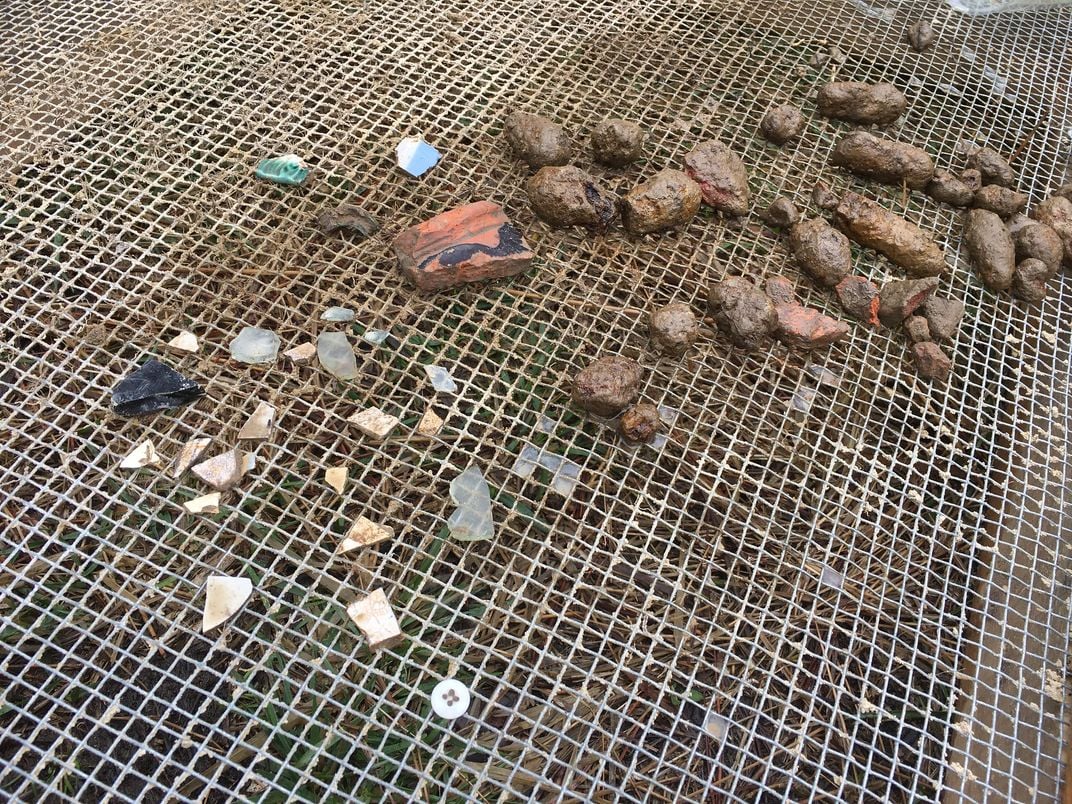Site of Harriet Tubman’s Lost Maryland Home Found After Decades-Long Search
The Underground Railroad conductor’s father, Ben Ross, received the land where the cabin once stood in the early 1840s
:focal(2468x2880:2469x2881)/https://tf-cmsv2-smithsonianmag-media.s3.amazonaws.com/filer/ab/a9/aba9f09f-3e98-400d-97fe-53beb0de840e/harriet_tubman_c1868-69.jpeg)
When Harriet Tubman was a young woman, she lived with her family in a cabin on Maryland’s Eastern Shore. Archaeologists looked for the site for 20 years to no avail—but now, reports Sarah Bahr for the New York Times, the search for the Underground Railroad conductor’s long-lost home has finally come to an end.
Last fall, Julie Schablitsky, chief archaeologist at the Maryland Department of Transportation State Highway Administration, was running a metal detector over an abandoned road in the Blackwater National Wildlife Refuge when she found a coin minted in 1808, the year of the Tubman parents’ wedding. Nearby, Schablitsky unearthed ceramic fragments dated to between the 1820s and 1840s. At that point, the archaeologist tells the Times, she knew that she had found the location of Tubman’s one-time home.
“She would’ve spent time here as a child, but also she would’ve come back and been living here with her father in her teenage years, working alongside him,” says Schablitsky in a statement. “This was the opportunity she had to learn about how to navigate and survive in the wetlands and the woods. We believe this experience was able to benefit her when she began to move people to freedom.”
Per Brian Witte of the Associated Press (AP), Schablitsky and her colleagues returned to the site last month to search for additional artifacts. They uncovered a number of objects dated to the 1800s, including nails, glass, bricks, fragments of dishes and a button.
“This gives us insight into a time and place in Tubman’s life we know very little about,” biographer Kate Clifford Larson tells the Times. “The community really created this woman, and we can’t fully understand her until we understand the place she came out of.”
/https://tf-cmsv2-smithsonianmag-media.s3.amazonaws.com/filer/a8/35/a835aed5-3a75-442d-ae2b-f121d497d09e/harriet-tubman-archaeological-discovery_51119553881_o.jpg)
The now-razed home is located on a 2,600-acre parcel of land purchased by the United States Fish and Wildlife Service in 2020. Archaeologists had previously been unable to conduct excavations in the area because it was privately owned, according to the statement. Due to sea level rise, researchers expect the site to transform into marshland by 2100.
Tubman’s father, Ben Ross—a lumberjack who was freed from slavery five years after his enslaver’s death in 1836—owned the cabin. As outlined in his enslaver’s will, Ross received a ten-acre tract of land close to the Blackwater River upon his manumission. His wife and several of their children, including Tubman, remained enslaved but were able to reside in the cabin, notes Michael E. Ruane for the Washington Post.
Born into slavery between about 1820 and 1825, Tubman grew up in antebellum Dorchester County. According to Encyclopedia Britannica, she was forced to work from a young age, alternatively acting as a nursemaid, a field hand, a cook and a woodcutter. Tasked with degrading duties, Tubman often disregarded orders, leading her overseers to switch her from domestic assignments to more arduous labor in the fields.
Though this new work was more taxing, it proved useful to Tubman later in life, offering a “steady schooling” in nature while presenting a welcome alternative to the “dead-end day-in-day-out tedium of domestic work,” as Beverly Lowry wrote in her 2008 book Harriet Tubman: Imagining a Life.
When Tubman was around 12 or 13 years old, she sustained a life-changing injury. After she refused to help an overseer restrain another enslaved person, he threw an iron weight at the man in hopes of stopping him. But the weight struck Tubman in the head, delivering a glancing blow whose aftereffects plagued her for the rest of her life.

According to the Post, Tubman lived in her father’s cabin between 1839 and 1844, when she was about 17 to 22 years old. She moved out after marrying a free Black man named John Tubman.
In 1849, Tubman fled north to Philadelphia after hearing a rumor that she was going to be sold to slaveholders in the Deep South. Between 1850 and 1860, however, she made 13 trips back to Maryland, liberating some 70 people—including her parents and many of her siblings—from bondage.
Though she is best known for guiding dozens to freedom on the Underground Railroad, Tubman’s lengthy life—she died in 1913 at about 90 years old—included many other notable accomplishments: She served as a Union spy, led a Civil War military raid that freed more than 700 enslaved people, opened a nursing home for the elderly and advocated for women’s suffrage.
The newly identified cabin site is currently closed to the public. But as Marcia Pradines, a project leader at the Chesapeake Marshlands National Wildlife Refuge Complex, tells the Guardian’s Alexandra Villarreal, officials hope to eventually include the spot on an interpretive trail. Artifacts found during the dig will go on view at the Harriet Tubman Underground Railroad Visitor Center in nearby Church Creek.
Pradines adds, “[T]o be able to share the story of how this particular parcel shaped the lives of Harriet Tubman, Ben Ross and all the other people who worked that landscape back then and share their stories is something that we don’t always get to do.”
/https://tf-cmsv2-smithsonianmag-media.s3.amazonaws.com/accounts/headshot/Isis_Davis-Marks_thumbnail.png)
/https://tf-cmsv2-smithsonianmag-media.s3.amazonaws.com/accounts/headshot/Isis_Davis-Marks_thumbnail.png)